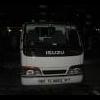Search the Community
Showing results for tags 'likely'.
-
http://www.todayonline.com/business/gst-hi...new-initiatives GST hike �more likely� if Govt needs to raise revenue for new initiatives
-
The Ministry of National Development (MND) may try out different mechanised parking systems in housing estates by the end of the year to ease a mounting carpark crunch. No location has been identified yet, but the pilot tests of such systems are likely to be carried out in older HDB estates with space constraints, said MP Lee Bee Wah, who is chairman of the Government Parliamentary Committee (GPC) for National Development. But before the pilot tests begin, the MND will work with the National Development GPC to conduct a study to assess the suitability of such systems, and to gather feedback. BACKGROUND STORY THE RATIONALE 'I would think solving the problems faced by residents is on a case-by-case basis. It doesn't mean residents go and vote to have a mechanised carpark system or not. Where there is a need, and there is no other cheaper option, then we would put in the mechanised parking system, should we find it suitable.' MP Lee Bee Wah, when asked if the process of deciding where to build mechanised carparks will be similar to that of lift upgrading Ms Lee was speaking to reporters on Thursday during a tour of a fully automated carpark in Club Street. MPs Penny Low and Gan Thiam Poh, who are both members of the GPC, were also present. National Development Minister Khaw Boon Wan, in a blog entry last month, had raised the possibility of building mechanised carparks in HDB estates to ease the parking crunch. The problem is especially acute in older housing estates because fewer residents owned cars then, and fewer parking spaces were planned. Other types of carparks may not be suitable for such estates because of space constraints in a built-up area. While mechanised parking is not new here, it is used mainly in commercial buildings like hospitals and condominiums. Some have questioned if such systems are suitable for residential estates. Acknowledging such concerns, Ms Lee said: 'Residents worry about reliability and the cost being passed back to them. It looks like it costs more, but as technology advances, and land becomes scarce, at one point it could become a viable solution.' Other concerns, she noted, include retrieval time and the reliability of such systems. But she stressed that mechanised parking is an option meant for older estates which have exhausted all other avenues to ease the parking problem. That is also why it is important to conduct a study of the various mechanised parking systems before coming to a decision, she added. The MPs on Thursday toured the fully automated carpark, known as M-Park@Club Street, which was built at a cost of $6 million. It uses a lift to transport cars to up to four levels and can house up to 140 vehicles at full capacity. A driver need only drive his vehicle into a car-lift and park it in the correct position. After pulling the handbrake and keying in a PIN number, the driver can leave the system to automatically park the car. To retrieve the car, a driver has to key in the PIN, and wait for about four minutes on average. For every 10 cars parked in a normal carpark, the mechanised system can park from 12 to 15 cars, said Mr Jeffrey Tan, division manager at MHE-Demag, which supplies the system. But in its four years of operation, the system has broken down about three times a month. The waiting time for drivers to retrieve their cars can also stretch from less than an hour, to three hours. Mr Tan attributed this to a variety of factors, such as mechanical faults of the moving parts, and a driver not positioning his car correctly. But he said: 'Educating and familiarising the users is a key factor in ensuring it runs smoothly. Once that's done, the incident rates will go down.' source: http://www.straitstimes.com/The-Big-Story/...ory_755139.html
- 30 replies
-
- Autoparking
- trials
- (and 5 more)
-
Proven pretty much here in MCF, that no money no talk! Singaporeans more likely to give money than volunteer, help a stranger: Study TODAY reports: The Republic moved up again to 34th on World Giving Index, where Myanmar is ranked the highest. However, Singapore placed 89th for how often they help strangers and 42nd for how often they volunteer. POSTED: 11 Nov 2015 07:50 A volunteer helping an elderly man put on a N95 mask at the Haze Shelter at Tanjong Pagar Community Club on Oct 3, 2015. (Photo: Jaslin Goh / TODAY) SINGAPORE: When it comes to giving to charity, Singaporeans are more likely to give from the pocket, than give up their time to volunteer or help out a stranger. The World Giving Index, compiled by UK-based non-profit Charities Aid Foundation (CAF), showed that nearly six in 10 in Singapore gave money to charity in the month before when polled last year, but less than three in 10 volunteered at a charity, and about four in ten had helped a stranger. Based on these factors, the CAF ranked Singapore 34th on the index, well behind neighbouring countries like Myanmar, which was ranked first, and Malaysia, which placed tenth. But this is a significant improvement from 114th place in the 2012 index and 64th place in the 2013 index. The index ranked 145 countries using 2014 data from Gallup’s World View World Poll, an ongoing research project carried out in more than 140 countries. In most countries surveyed, 1,000 questionnaires are completed by a representative sample of individuals, with larger samples for big countries like China and Russia. Respondents were asked how often they donate to charity, how often they volunteer and how often they help strangers. Singapore ranked 18th for how often residents gave money to charity, but placed 89th for how often they help strangers and 42nd for how often they volunteer. Nonetheless, the Republic was among the top five most improved country over time, improving 11 percentage points over five years. In 2012, for example, only 29 per cent of the respondents gave money to charity, 8 per cent volunteered, and 24 per cent helped a stranger. The report, released on Tuesday (Nov 10), attributed the high levels of giving in Myanmar - where nine out of 10 gave money to charity - and Thailand to high levels of Theravada Buddhism, where many devotees regularly give money and time to ordained monks and nuns, as well as to the upkeep of temples. The country also came in top for volunteering, with half the population doing so, followed by Sri Lanka, Liberia, New Zealand, Canada and the United States. “However the achievement will be contrasted with the continuing plight of the Rohingya people within the country,” the report stated, referring to the violent persecution of the Rohingyas, a Muslim minority group who are not allowed to vote and have been driven from their homes to neighbouring countries or into camps. The report also observed that across the world, people responded to those in need. For example, the proportion of people donating money in Ukraine more than quadrupled last year compared with the previous year, probably due to fundraising efforts for those affected by the conflict. Also, Iraq emerged top in helping a stranger despite the security situation in the country. At a global level, the study found that more people are donating money to charity, with almost a third of the world (or 31.5 per cent) giving money to charity in the month before - a rise of 3.2 percentage points from 2013. However, the global proportion of people who said they volunteered time fell slightly, to 21 per cent from 21.3 per cent. And almost half of the world’s adult population said they helped a stranger last year according to the poll, a slight increase on the previous year. i would say that we have to look after ourselves first and if we even struggle to put $$$ on the table for ourselves, hardly can we find the time to volunteer I was in that state, but now tt I am more comfy, I find myself volunteering more with those in need. @little_prince do your pitch here, as how we discussed offline
-
Kids 39% more likely to buy parents' car brand Children are a blank slate. They draw their habits, behaviors and mannerisms from their parents. If you subscribe to that viewpoint, then this study out of Michigan State University won't really come as a surprise. According to Soren Anderson, and MSU economist, kids are 39 percent more likely to buy cars from the brands their parents support. So, if your parents buy Jeeps, there's a strong correlation that you're going to end up behind a seven-slat grille at some point. Same goes for Cadillac owners, Toyota fans and Bimmerphiles. The on-going study drew this correlation after surveying 4,300 adult children and their 2,600 parents. The nationwide surveys were held every two years between 1999 and 2011 and brands were bunched by ownership, so for example, rather than listing Cadillac, Chevrolet, Buick and GMC independently, General Motors was the sole option. "In theory, these findings could change the way automakers price and market their cars," Anderson claims. "Is this really about the cars or could it be other factors, like parents and children tending to be more similar to each other than other people? We're pretty sure it has something to do with the cars themselves." The results of Anderson's study will be published in the Journal of Industrial Economics. Scroll down for a press release on the topic. http://www.autoblog.com/2014/10/16/kids-39-more-likely-buy-parents-car-brand/?ncid=edlinkusauto00000016
-
For those still affected. Me ang teng kee gia liao, 11B sayonara bye bye lo so heng bo wa eh dai ji liao SAF to hire more professionals to enhance NSFs' training By Saifulbahri Ismail POSTED: 06 Mar 2014 14:29 The Singapore Armed Forces will employ more professional trainers to make the training of National Servicemen (NSFs) more effective and efficient, possibly even shortening the training duration. File photo: Cadets of the Specialist Cadet Course celebrating after graduating as specialists of the Singapore Armed Forces. (Photo: MINDEF) SINGAPORE: The Singapore Armed Forces will employ more professional trainers to make the training of National Servicemen (NSFs) more effective and efficient, possibly even shortening the training duration. Defence Minister Ng Eng Hen made this announcement in Parliament during the Defence Ministry's Committee of Supply debate on Thursday. Dr Ng said that as many as 1,100 more full-time trainers could be employed. This will help boost the ratio of professional trainers to trainees in the Basic Military Training Centre to about 1:3. Currently, the ratio is 1:6. This initiative arose from discussions organised by the Committee to Strengthen National Service (CSNS). Dr Ng said the largest impact of having more regular trainers will be on the training of full-time NSFs. Under the current system, second-year full-time NSFs train and lead new recruits and servicemen. Even though this system has its merits, having professional trainers will have greater impact on training outcomes, inculcating discipline and transmitting values. Dr Ng explained that some time is required for NSF trainers to adapt themselves to the training environment in their units and training schools and having regular trainers will smoothen this transition. He stressed that time savings, if any, will be a few weeks at most. In addition, Dr Ng said although having more full-time army trainers can possibly shorten training durations, the number of In-Camp Trainings (ICTs) that NSmen have to perform will not be reduced. However, he said one area the ministry can improve on, is to reduce the waiting time before enlistment. Dr Ng has asked the SAF to develop a system where it can commit to enlist all enlistees, except for some exceptions, within a fixed time frame, of within four to five months. The army expects to complete its detailed studies on the issues raised by the CSNS in the second half of this year. - CNA/xq (source: http://www.channelnewsasia.com/news/singapore/saf-to-hire-more/1022726.html )
-
from Yahoo news: Large testicles linked to higher rates of cheating A well-known zoologist from Norway is suggesting that his research on the size of male primates' testicles is somehow proof that female humans are likely to cheat. If this sounds like a stretch, that's because it is. Petter Bøckman, from the University of Oslo, released a new study that shows the larger the size of a male primate's testicles the greater the chance that he and his female partner with be unfaithful, reports The Telegraph. The reasons for the infidelity are not entirely clear, but Bøckman suggests that a male with large testicles has a greater amount of sperm, and therefore, is motivated to spread his genes via multiple females. It is further implied that because females are more selective in their mate choice, she is looking for a male can get the procreation mission accomplished. Even if she mates with a large-testicled male, she will keep looking for a man who is more likely to be faithful. The most bizarre aspect of this research is the fact that Bøckman says these findings are proof that female humans cheat. "We can pledge our fidelity until we are blue in the face, but this is evidence that our females are cheating," he says. "We are not like chimpanzees, where the female has four or five sexual partners every time she is in heat, but there is always a certain likelihood that the neighbouring male has dropped by.” Ugh. Where to start with Bøckman's comments. First of all, it's not news that women cheat, just as men do, so the fact that he points this out is of no real significance. Secondly, it is entirely possible that the reasons why human women cheat have very little to do with the same reasons why female bonobos, gorillas, and chimpanzees are unfaithful. It seems highly unlikely that a human female would cheat on her husband or boyfriend simply because his testicles are too large! In all fairness to Bøckman though, maybe what he was trying to indicate is the fact that humans have unconscious biological drives, not unlike primates. Perhaps it is more plausible that a woman would cheat because she senses a lack of commitment -- physically, mentally or emotionally -- in her partner. What are your thoughts on the findings of this study? Do you think it is a reflection of human sexual behaviour? Sound off in the comments below. link: http://sg.news.yahoo.com/blogs/shine-on/large-testicles-linked-higher-rates-cheating-174024541.html Like this kind of theory also can ........... Limpay tua kee also cannot .... KNN..... a Zoologist compare primates with human ...
-
http://www.channelnewsasia.com/stories/fea...1185668/1/.html Upper class people more likely to cheat: study Posted: 28 February 2012 0447 hrs
-
Hehe, I have quite a number of friends that 'mess' around so high chance of HIV positive. Will you even share makan with them like soup, etc?
-
GOOD LUCK, GUYS!!!! http://articles.timesofindia.indiatimes.co...al-headquarters Singapore likely to hire 60k Indian pros in 2011 Mini Joseph Tejaswi, May 12, 2011, 07.37am IST BANGALORE: Singapore has emerged as one of the worlds largest hiring markets this year,and this offers opportunities for Indians. The country expects to hire over 3 lakh mid-to-senior level professionals in 2011.Hiring firms say over 20% of this talentaround 60,000 people-will be from India,50% from within Singapore and the rest from other parts of the world. Zubin Shroff,partner in executive search firm Braithwaite Steiner Pretty,said Singaporean firms requirement for talent had multiplied this year,with all markets in the region growing.This is creating opportunities for many Indian professionals from across industries. Singapore is the regional headquarters for many American and European banks,financial institutions,manufacturing giants,oil and gas companies,large IT corporations,mining firms,healthcare and hospitality brands.These companies are now expanding rapidly in Singapore and across China,Indonesia,Malaysia,Hong Kong,Vietnam and Australia.Hiring firms say some 40% of the 3 lakh recruits will be placed in Singapore while the rest will go into other Asia Pacific regions. Jayanthi Y,chairman of hiring firm AdAstra Consultants,who is in charge of talent acquisition for Apac,said,Singapore today offers a never-before opportunity for Indian talent.Its proximity is an attractive element,while salary is the biggest attraction.Professionals receive 4 to 5 times what they are paid in India. Jobs are available particularly in banking,hospitality,technology,manufacturing,oil & gas,healthcare,mining and textiles. Global executives are attracted to Singapore for its high quality of life,congestion-free traffic movement,its safety standards.For Indians,the three--hour flying time and Singapores assimilation of Indian culture are added attractions.Most companies operate out of economic zones where the maximum personal income tax is 15%.
-
Friday
-
Many know that with the current 4-horse race, TT will most probably win as the votes for the others are split between the 3. My situation is this: 1. I think our president should not be endorsed by the PAP (together with clans, societal groups, 75% of unions, and even taxi drivers) as this person needs to be trusted to challenge them on their actions. 2. While there are many pros and cons of the other 3 candidates, I think any of them would be a better choice than the PAP-endorsed candidate (i.e. TT) I invite fellow forumers, analysts, and fortune tellers to predict who is most likely to win the most votes among the other 3 candidates. But I don't want this thread to discuss "who is better." This will be a never-ending story and TT will win. Maybe we can guess from attendance at rallies, maybe the polls in MCF, maybe the opposition parties (not just SDP) can finally pull together and decided to support a particular candidate... At the end of the day, I intend to vote for the candidate who will most likely garner the most votes other than TT. Maybe if enough people "all in," then there is a chance to tip the scale against the obvious winner. Wishful thinking, I know, but I think it's still better than this endless battle of discussing "who is better" between the 3...
-
By Andrew Loh It doesn't hit home until you're standing there, eyes fixed on the old man of 87-years old. He is no longer cognisant of his surroundings, I am told. His ability to register familiar faces and places is no longer as keen as before. He can barely recognise his own son who is standing beside me at the side of his bed on the day we paid him a visit. First a boat-builder
-
Read up in the net today.. found it will be nice to share with everyone.. http://motoring.asiaone.com/Motoring/Owner...428-276195.html
-
Inspired by the other thread. Let's have your predictions. My predictions would be: 1) Tear-out parking coupons. To be replaced by cashcard systems or SMS-based systems or some other new thing. 2) Paper road-tax discs. To be replaced by pure-electronic registration - if they can do it for OPC, why not for all cars? 3) Finally (this will take the longest, since they just spent money on implementing new EZ-link cashcard-based IUs and new gantries), removal of in-vehicle units and all ERP gantries, to be replaced by GPS-based road taxation.
-
Hi guys, Just wondering. Personally, I have notice that many parked illegally along the roads causes traffic jams or slow traffic. There also many drivers that slow down and try to cut out, exit during the minute and wrong speed speed wrong lane. I think Traffic Police and LTA should increase the fine or demerit points to deter these errands drivers.
-
http://www.channelnewsasia.com/stories/sin.../315687/1/.html Is it really seeking the views of the public or for their own interest. What's yr view on this?
-
Given that the latest hot local news is about an NSF going to Orchard Road with his loaded SAR...what would happen if another NSF ( who happens to be in the Armoury unit...tank division) ....drives the latest Leopard tank ( I know it is a second hand tank!! )out onto Orchard Road?
-
Would like to start a thread - whats cars are least likely to get stolen in JB? Chery QQ Mazda RX-8 (super drinker)
-
Hi all, Am new to MCF, but have lurked around and enjoyed and benefitted from the information shared by everyone. Have decided to book an Optra (A) tomorrow and thought I'd share my thought processes and welcome comments and help from one and all. Currently, we (wife and I) drive a 1.5M Sunny (2000) and since it is coming to 5 years, thought it would be worthwhile changing cars. Those who have bought cars then know that the COE price is incredibly high then. Thought it would be good to get auto as well (easier as one gets older), and many have encouraged taking advantage of the 130% OMV. One of our key criteria is leg space (I'm quite tall) and Sunny owners will know that there is a dearth of leg room once the front seat is pushed all the way back. Also, budget was around $70K, and wanted a DOHC engine (it's just my perception of it being more durable in the long run). We were not in a hurry, so we shopped around (over the last few months)for cars but finally (for one reason or another) decided it was either going to be the Corolla or the Optra. Since cost was important, we decided to do a very rough Total Cost of Ownership (TCO) table to more objectively evaluate the options. Also did a table for Pros and Cons that were not directly measurable. Both had good rear legroom (even after pushing the front seats all the way back), ABS with EBD. In terms of exterior styling, I've no preference (not particulary fussy). I liked the interior feel of the Corolla better (leather felt softer and panels seem more refined), but my wife likes the Continental simplicity of the Optra (although I felt the build quality of the electonic mirror adjuster was a bit shaky). In terms of advantages, Corolla has an additional passenger side airbag (which is useful), and brake assist (which is nice, but I found it takes getting used to). The reverse sensor is quite annoying, and I'd have disabled it if I'd gotten it. The CD player has MP3 functionality, and there is additional rustproofing. For Optra, it has independent rear suspension, foldable rear seats, and the drive is quiet and refined (something that has been highlighted a lot in this forum, but driving is believing), more so than the Altis which was a bit loud when revved hard. The left side signalling takes a bit of getting used to, and the handbrake in the wrong side is a minor glitch. Overall, for our preferences, we were more inclined to the Optra, but fears of high fuel costs (Optra is about 70kg heavier, and Corolla is touted to have good fuel consumption) stayed our hand, and we did a TCO taking assuming the Corolla has a 20% advantage in fuel consumption (10km/l vs. 12km/l) which may or may not be reflective of reality. At our rate of fuel consumption (roughly $200/month which will change with auto) over 10 years, this would have amounted to about $4,100 net present value discounted at 3% (a reasonable long term government bond rate). In terms of servicing, although there are cheaper alternatives, we took the packages offered by BM and SA as guides and found that BM was cheaper by about $1K over three years. Over 10 years it would be about $2,800 NPV at 3%. Scrap value is again better for Corolla ($1.1K NPV at 3% discount). Overall, that's about $8,000 lower TCO. When we evaluated this a couple of weeks ago, the price difference/incentives to buy the Optra could not make up this difference, so (not being in a hurry) we waited until the recent COE tender. Now, the price before discounts was $4,500 in favour of Optra. Our trade-in value for the old Sunny remains $1.5K higher than what BN could offer (yes, too lazy to shop around). Insurance discount for SA is $1.5K higher than BN, and at my anticipated loan amount, the cash back is about $400-$500 higher than BN, although BN gives a generous ($1.5K)cashback even if you take lower, shorter term loans. All that adds up to about $8,000, so with the TCO the same, I can happily go and book my Optra (unless some unforseen circumstance crops up.) P.S. Sorry for long first post.
-
Due in the States next summer as a 2004 model, the fifth-generation 5 Series will likely bow at the Geneva motor show in March with a new 380-hp, twin-turbocharged 3.0-liter inline six-cylinder. Other engines slated for the 5 include a turbo 2.0-liter inline four and naturally aspirated versions of BMW














